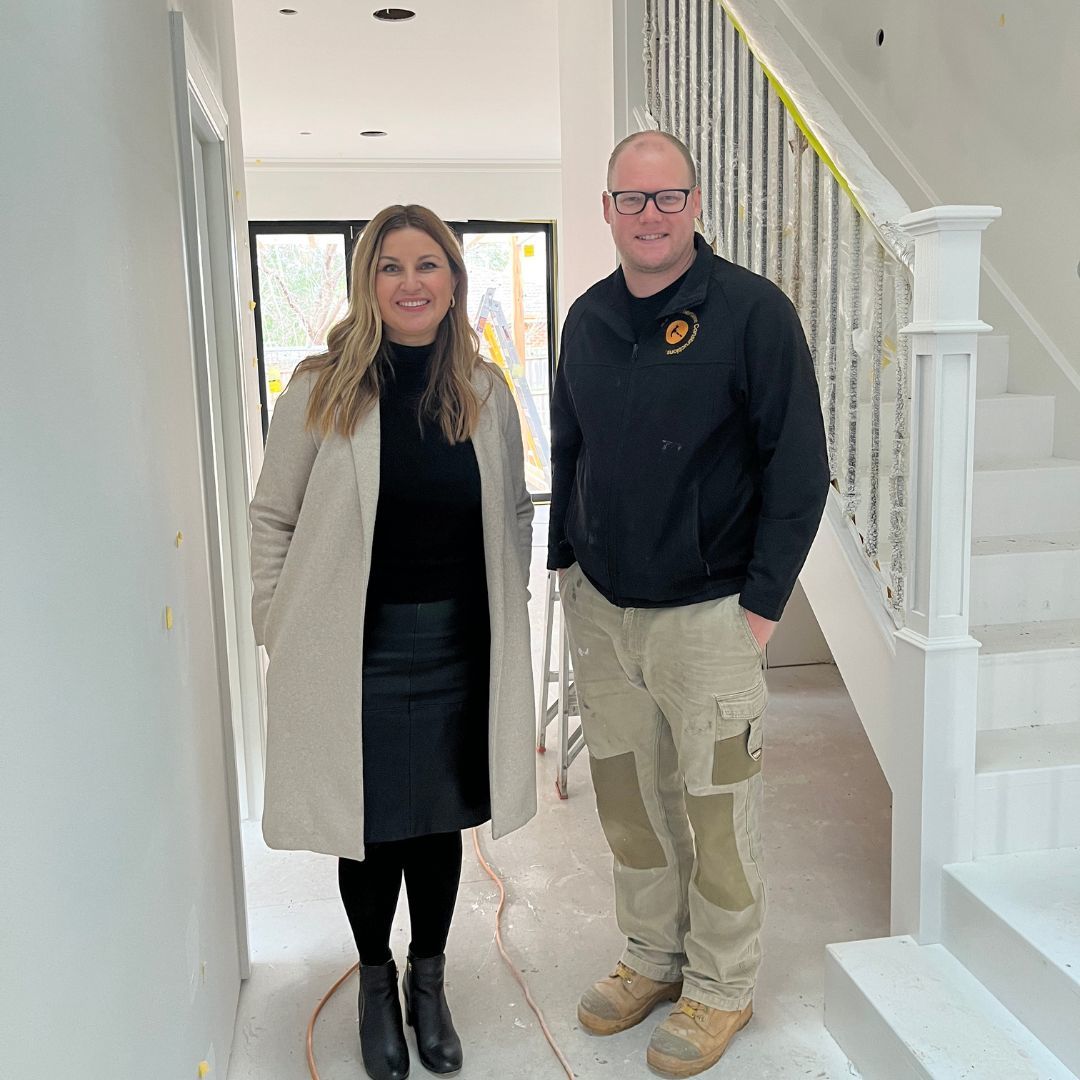So you’ve made the decision to renovate your home. But what’s next? Our number one tip would be to enlist the help of an expert! No matter how big or small your project is, you will set yourself up for the best result possible if you get it right from the beginning.
For us, working with an Architect streamlines the whole construction process. When we are presented with a set of architectural plans, we know decisions have been made, all the specifications are set out and we are ready to hit the ground running. Of course this doesn’t mean things can’t change along the way, but the process is much smoother.
And yes, while this advice comes with an additional cost, the value in having a clear direction from the offset is priceless. Changes to floor layouts, design, fittings and fixtures mid build hold up the building process, but also add additional cost. The architectural plans have already set this all out, and we will have quoted accordingly.
We have been working with Architect Nicole Iacono on our Essendon renovation, and caught up with her on site to learn more about what an Architect does and the value they can add to your renovation project.
HT: What does an Architect do?
Nicole: An Architect is a design professional who combines their creative skills and wide range of construction and scientific knowledge to design buildings of all types. They work with their clients closely from the early stages of the design process, all the way through to the completion of the project, to bring their clients’ ideas to life. An Architect will also liaise with other consultants along the way such as engineers, surveyors, and builders. Architects don’t just ‘draw plans’, they are a client’s trusted adviser who is there to help them achieve the best outcome for their project.
HT: What can a client expect when working with an architect?
Nicole: Each architect has a different way of working and has their own unique way of relating to their clients. Ideally, a client should find an architect they feel they can trust, speak frankly to, and who understands them. The process can be a long one, and may go on for many months, even years, so it’s important to establish and maintain a level of respect and trust between each other. As a client, you need to not only be prepared to share your goals and needs for your project but give your architect feedback and make timely approvals when requested so that the process runs smoothly. Collaborative architects will welcome clients’ ideas but use their knowledge and experience to ensure all factors influencing the design are considered.
HT: What's the process from ideas to plans?
Nicole: Depending on the project, the process is divided into a few stages. Pre-Design is the initial stage, where the architect takes the client’s brief or wishlist and develops a Design Brief or a more detailed set of criteria for the project.
 | This stage also includes measuring up existing buildings, gathering property information or reports and engaging consultants such as land surveyors and geotechnical consultants. This stage is important because it may highlight unknown factors and informs the design decisions to come. From there, the architect moves to Schematic Design stage where they develop design options or ideas which usually start out as plans, elevations and sketches to convey their early concepts. A client may want to see 3D views or more detailed images. The Design Development stage is where more detailed decisions are made such as what will the roof materials be, and what will the kitchen look like. If you need town planning approval, this needs to be undertaken usually after Schematic Design stage. The architect consults with the local council to determine what drawings and documents they need to provide to obtain a planning permit. After Design Development, the process moves to Tender Documentation or Working Drawings stage, where the drawings are fully detailed and include all relevant information such as building sections, electrical layouts, colour schedules etc. Architects can include interior design services in their agreement, so that things like colours, finishes and interior drawings are included in the final set of plans. |
HT: How long can a client expect the process to take?
Nicole: This really depends on the size of the project, how quickly the architect can execute their drawings and how timely the client comes back with feedback and approvals. For a small-medium sized renovation where there are no delays or lags in the design process, the process can take up to six months, but for new buildings or larger projects it can be longer. If a planning permit is required, the design process is suspended until approval is obtained. The council can advise on timing to obtain a permit, and this can vary anywhere between six and 12 months depending on the project.
HT: What are some advantages, for a client, of working with an architect on a renovation?
Nicole: By using an Architect to prepare drawings, a client not only gets a unique design, but a detailed and complete set of plans which makes it easier for a builder to price and build from, saving time and cost during the construction stage. By having an overall vision developed along the way with the client, the architect ensures that all necessary design details and specifications are included or allowed for before the job starts, so that there are no hidden surprises or decisions to be made during construction. During construction, an architect works closely with the builder to ensure that any queries are resolved and that the drawings are followed and adhered to as much as possible. An architect can really give a client the best outcome for their project by working closely with them all through the process, doing those early thorough investigations and bringing together their creative skills and knowledge and those of other consultants to turn their project into not only a functional building but a beautiful, engaging and valuable one.


